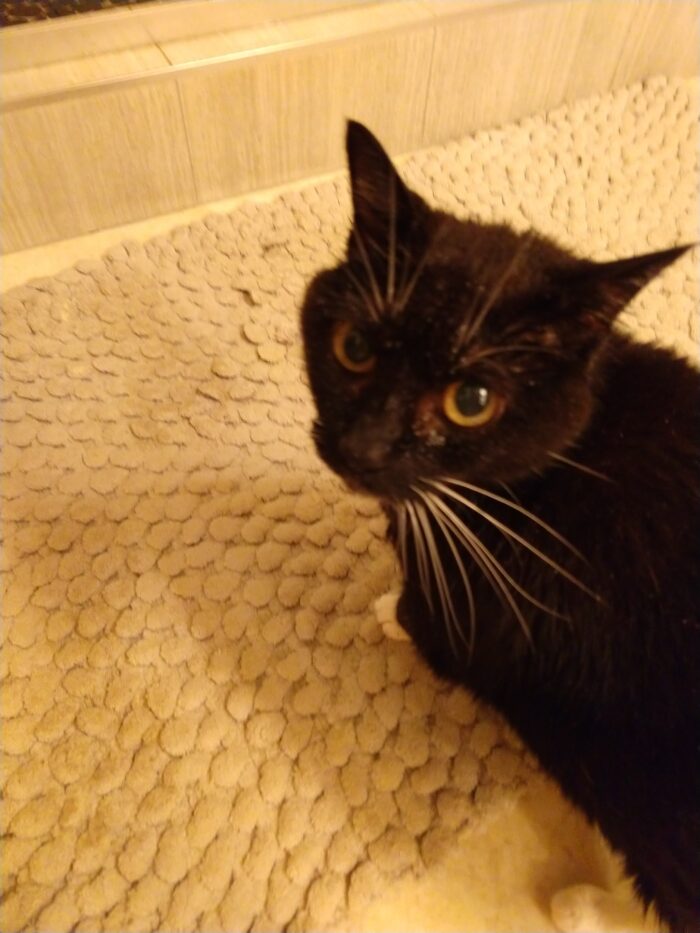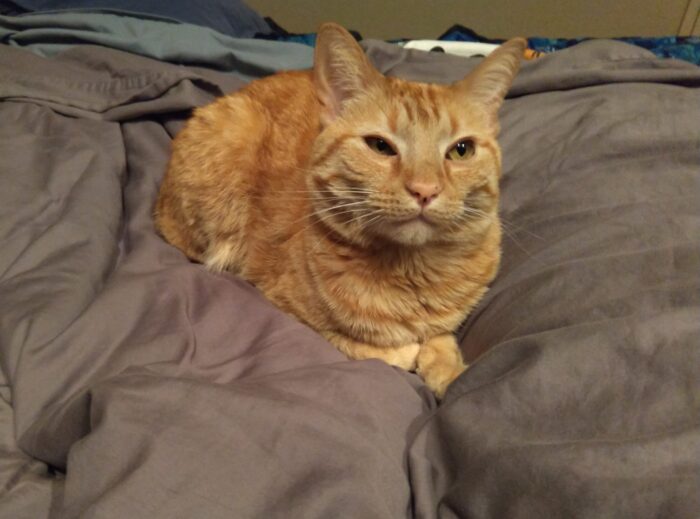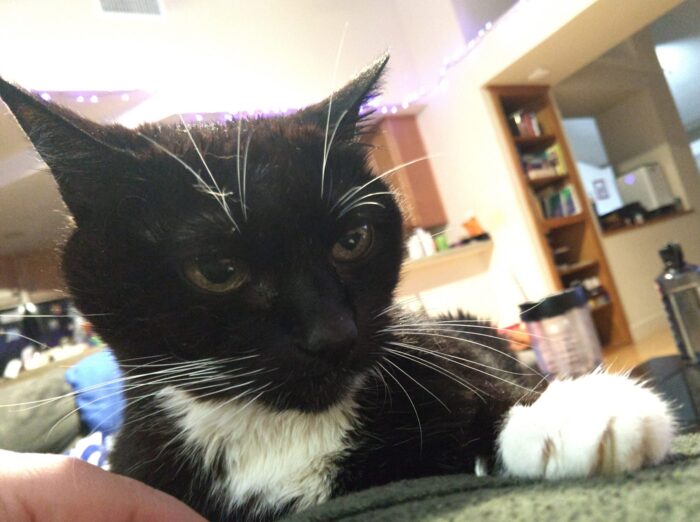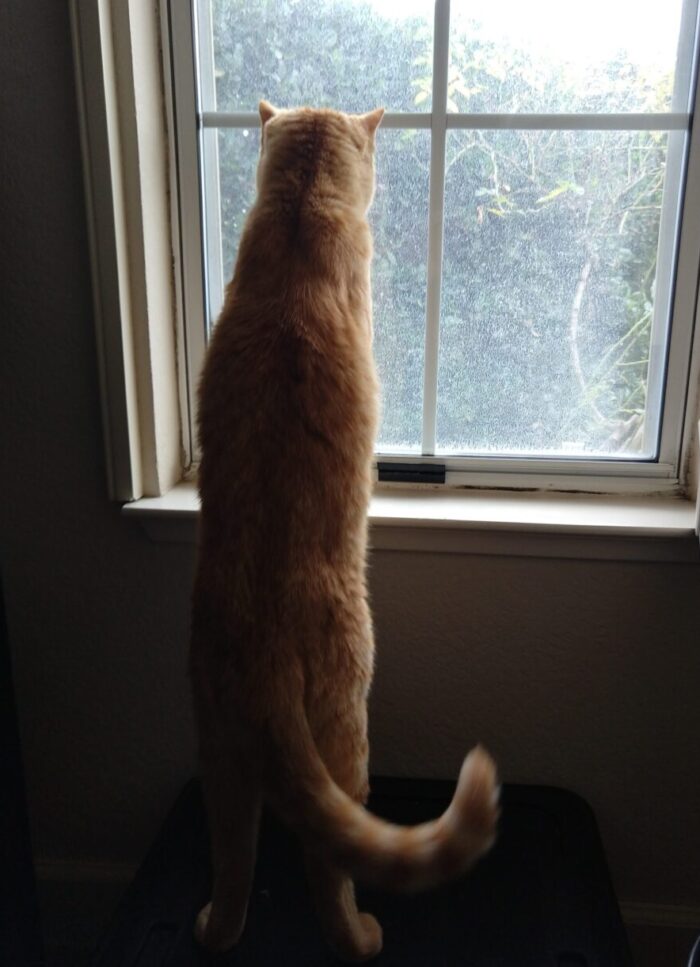Hello, friends and enemies. The last two weeks have been busy. I’ve had a lot of appointments. I am taking many dance classes. I am trying to read my books and live my life. Oh yeah, and I have to work. On top of all that, we have noticed that the ice maker inside our refrigerator is leaking. We have had to turn it off to prevent further problems. Someone is supposed to come look at it this week and I am desperately hoping this doesn’t become a whole thing. We have barely recovered from the dishwasher saga. I have had to resort to making ice in ice trays again (first world problems, I know). This is a reminder to stay humble. Just when you think you’ve arrived in life, you’re back to making your own ice cubes.
Books and Other Words
Martha Well’s Network Effect is the fifth book in the Muderbot series and the first to be a full-length novel. What I like about this story in particular is we see Murderbot, a machine-human construct, figuring out what it means to be friends with another bot, the research vessel Perehelion (aka ART [Asshole Research Transport]). Seeing both Murderbot and ART ready to kill all humans on each other’s behalf just warms my heart.
The Future by Naomi Alderman was a really good read. This doesn’t surprise me. I liked her previous book, The Power, enough to write a whole post about it. The Future asks what it might take to improve the future. What would stop or slow global warming? What would reduce wealth inequality? What can anyone do about it? The Future is set in the near future and focuses on the people close to three tech billionaires who are running companies roughly analogous to Google, Facebook, and Amazon. The billionaires are obsessed with the idea that there will be some kind of apocalypse and only they will have the resources to weather it in safety, unlike the rest of us plebs. I don’t feel like I can really describe the plot without spoiling it, but I will say that it’s kind of a fictional distillation of the non-fiction books The Age of Surveillance Capitalism and The Big Nine, plus maybe Margaret Atwood’s Oryx and Crake.
Manufacturing Consent: The Political Economy of the Mass Media is a book published in 1988 that feels extremely relevant in today’s media climate. Edward Herman and Noam Chomsky’s argument is that the way the American media choose what to report on, and the framework they use in reporting, creates support for the United States government’s political agenda. There’s definitely a reason that this book is a classic in the genre. Even though this book is almost 40 years old, it felt completely relevant to the way, for example, that Israel’s war against the Palestinian people is being depicted in American news (just look at all the comments about how the media largely ignored South Africa’s opening arguments at the International Court of Justice). The book discusses several examples, including the Vietnam war, and elections in Guatemala, Nicaragua, and El Salvador and how the media covered these topics. The essence of Herman and Chomsky’s argument is that the media apply different frames of reporting to the United States’ enemies versus its friends. Elections in a friendly country are considered fair and citizens are seen as enthusiastic participants (even if, as in the El Salvador election, voting is compulsory and anyone who doesn’t vote may well be murdered by the state). Whereas elections in a country that is, say, flirting with socialism, are coercive, don’t have enough choice, and problematic for various reasons. The authors ultimately conclude that the press is supporting the agenda the wealthy and political elite rather than focusing on informing the public. They also note that, because news reporting is funded by advertising, advertisers themselves play an outsized role in what is allowed to appear in print. Herman and Chomsky are not arguing that this American media model is like what you would see in an authoritarian state—no one is getting disappeared for reporting on sensitive subjects—but the press selectively ignores some topics that don’t agree with the government/elite’s viewpoints. The antidote to this kind of media malaise? As usual, it’s up to use to educate ourselves and our communities. The good news is, with the internet, we have a lot of options for where we can get our news and it’s easy to find sources from other countries or independent outlets.
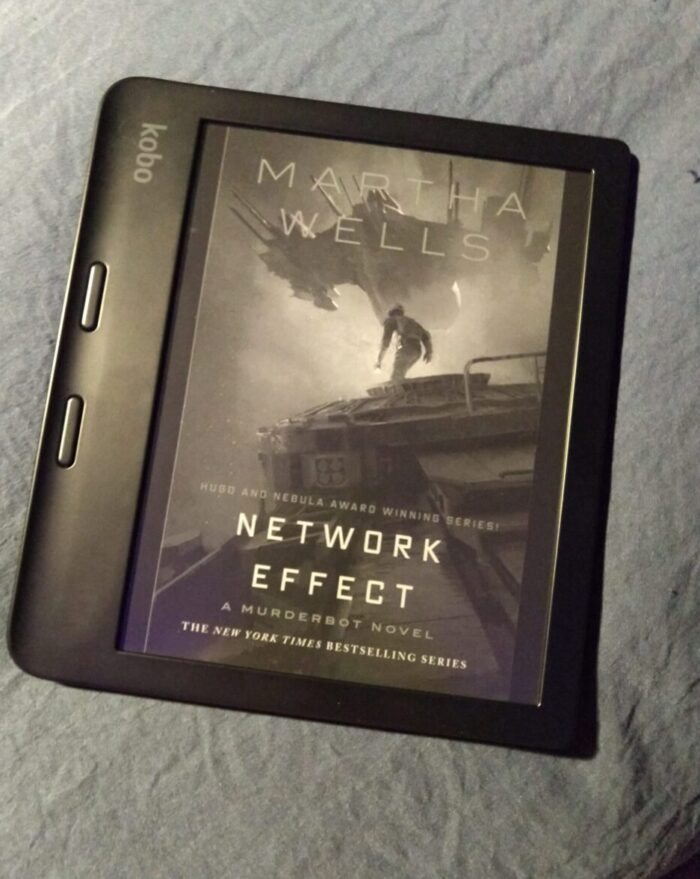
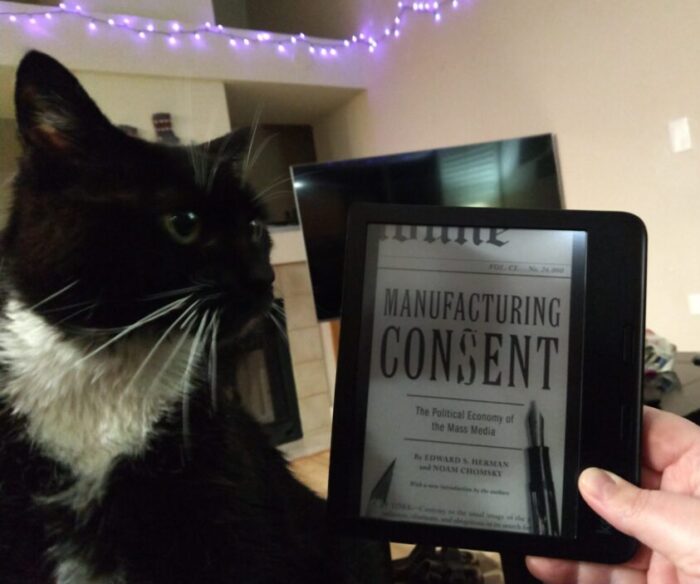
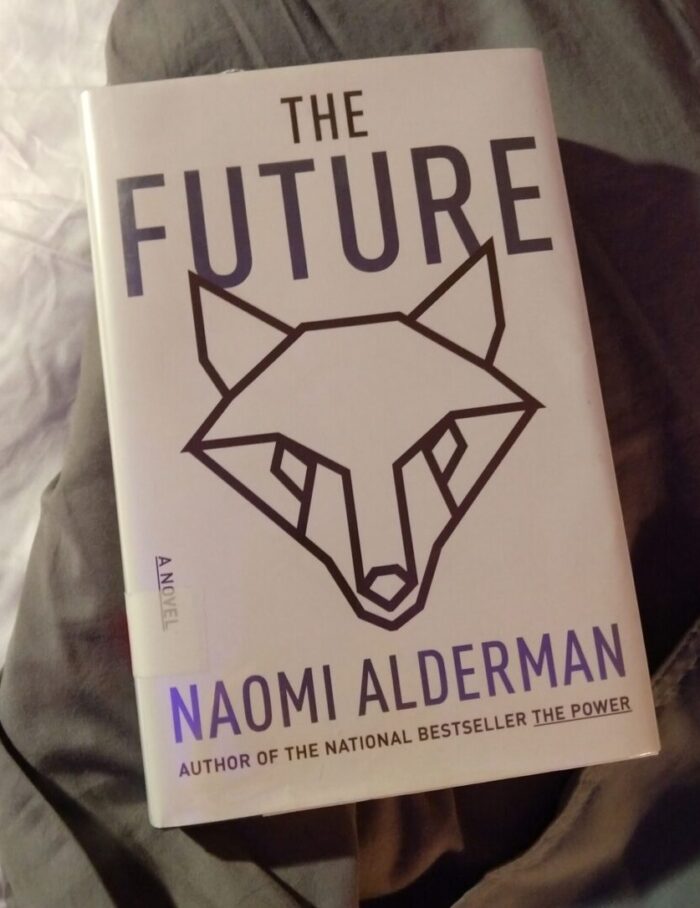
Meanwhile, on the internet:
- I was told no one wants fat girls. Growing up, my body was a punch line via The Cut. This essay was a gut punch for me. There are a lot of poignant bits for me but this one really hurts, “the systematic derogation of certain bodies — ones that are fat, as well as trans, nonwhite, or disabled — leaves some of us vulnerable to additional harms. For one, we may consent to sexual and romantic relationships we don’t want out of a sense that we’re not entitled to say no, or that this is the best we can do.”
- Fast-food giants overwork teenagers, driving America’s child labor crisis via The Washington Post (gift link). Yikes. “Child labor violations have more than tripled in the past 10 years, with violations in food service increasing almost sixfold.” Call me a radical socialist if you must, but I am against workplaces taking advantage of children.
- Asking people to “do the research” on fake news stories makes them seem more believable, not less via Nieman Lab. Some researchers did a literature review of what happens when people attempt online “research” on news stories. The results found that this often entrenches incorrect information and fringe beliefs. Gang, I think our society is in real danger.
- We need jungle [I’m afraid] via Venjent on YouTube. And now for something fun. Some British quiz show asked a question about electronic music and, when the contestant responded “drum and bass,” the host said “I can’t accept ‘drum and bass.’ We need ‘jungle’ I’m afraid.” This has, of course, spawned a bunch of jungle remixes. I find this hilarious.
Rampant Consumerism
I mentioned last time that I’d been having a lot of back pain while in bed and I ordered a new pillow about it. Now that it’s here and I’ve had the chance to use it, I gotta say, it’s great. My back does not hurt! I’m not rolling around all night like a gas station hot dog under the heat lamp! It’s a triangular pillow that goes under the thighs and gets the back into better alignment. Highly recommended! I also got a new pillow for my head and I wasn’t sure if I was going to like it but the last few nights I have sunk into the bed and passed the fuck out so I guess it is working. For the curious, this is the pillow I bought.
Languages
On the recommendation of my Icelandic teacher I tried out a language-learning tool called lingq. I told him that this year I am really trying to get out of the intermediate slump and he thought this might help. So far, I’m into it. It has texts and, as you’re reading, you can click on any word to see the definition then mark the word on a scale from known to unknown, then the app quizzes you on the words later. You can also add your own texts, so you can use it to read articles online or ebooks (if you have a format you can upload) or whatever. I think this is going to be really good for me. It seems like a good intermediate tool. I definitely would not use this for my Spanish, since I can already read books with minimal assistance. I think it would be a little overwhelming for a true beginner, but it’s working great for me for Icelandic right now.
Corporeal Form
I’ve had a whole bunch of appointments in the last two weeks and I did learn a few things. I shall start with the most annoying. Note, if you are sensitive to any discussion related to eating disorders, please skip the next paragraph.
My gastroenterologist referred me to one of Kaiser’s “wellness coaches,” which I did not think was going to be useful but I’m trying to keep an open mind and avoid being seen as a difficult patient. This appointment lasted all of ten minutes, which does not seem to me like enough time to do much of anything. The woman asked me very few questions. One was “how often do you eat.” I told her I try to eat when I’m hungry and she responded to that with “sometimes we shouldn’t eat when we’re hungry.” Red flag! If you want someone to develop/reacquaint themselves with an eating disorder, that seems like great advice to get you there. I’ve spent years trying to learn to listen to my body so this actively made me angry. She also asked if I had tried to lose weight before and I said yes but I always plateau after maybe losing 30 pounds. Her advice was that sometimes to get through a plateau, we just have to eat even less. Which … jesus christ. Other than “don’t eat,” her main advice was that half of what I eat should be vegetables, which sounds great in theory but very challenging in practice. I asked how to eat half a plate of vegetables for breakfast and she suggested putting them in an omelette. I am a committed egg-hater, so I said that advice will not work for me. At this point, she changed the subject and asked if I’d like to try weight-loss drugs. I said no because I have osteopenia and these drugs are bad for your bone density. I’d rather be fat and have bones. Anyway, she wrapped things up pretty quickly after that.
I had not one but two fibroscans, which measure the fattiness and the fibrosis of the liver. The first was at Kaiser and the second was through a study. I thought the study was paying me a lot more than the $25 I got, but I guess I misread the website and there is more money that you can get with doing some more activities over time. In any case, the first scan at Kaiser showed that my fibrosis score was 42 kilopascals—a normal liver is not over 7—but the second scan was only 27 kilopascals. Unfortunately, either score is in the “you are in the worst stage of fibrosis” category, but that is still a really big difference. My doctor said that, for fat people, this test is often unreliable and inflates the severity of the fibrosis, so she wants me to get a liver biopsy to find out what’s really going on. I’m going to do it but I’m annoyed because, no matter what the results are, the doctor’s only advice is to lose weight.
I met with the physical therapist who I saw last year for my shitty knees. Since getting the abdominal ultrasound to find out if I have fatty liver and learning more about my organs, I—and I know this sounds a little wacky—have noticed my spleen (yes, my enlarged spleen) is kind of hurting. So, I emailed my PT like “am I crazy and also can you help?” Because she is extremely cool and smart, she said I am not crazy and there are some things we can try. She gave me a couple of activities that I can do to very gently massage my torso and some stretchy kind of things to open up my chest. We also talked about referred pain, which is when pain from internal organs can cause ouchiness (technical term lol) in other parts of the body. Apparently liver issues can cause shoulder pain? So wild.
Finally I had a full intake appointment with my new dietician, Jackie. I will just say: she is great. She is the only person who has told me that there are some specific things I can do for my liver. She scoffed when I told her all the doctor advised me to do is lose weight. She asked me a ton of questions about what kind of stuff I eat, when, and who I eat with, what I hate, what other medical conditions I’m worried about, etc. She gave me a few recommendations to start with and we’re going to meet again in a few weeks to see how it’s going and add more things to try out. First, it seems like getting omega-3 fatty acids is good for the liver. Unfortunately for me, one of the best sources of omega-3 is fish, which I cannot eat because it makes me sick. Jackie has me trying out adding a tablespoon of flax meal to my oatmeal in the morning to get omega-3 instead, which is pretty easy. I also ordered some of the non-fish-based omega-3 supplements. Second, as many of you know (probably from reading my blog and seeing what I cook), I’m also not a big fan of fruit, mostly for texture reasons. So one of my other dietician homework tasks was to try making a smoothie to get some fruit in my diet. I still don’t love fruit but it wasn’t that bad and if this is all I have to do to improve my liver health, I am not going to complain (very much). Finally, I am supposed to try adding some more whole grains to my diet. Jackie suggested getting whole grain pasta, which I may yet, try, but I made a mostly whole-grain bread recipe this week and it was really good. So, I think all this stuff is pretty doable. As with most things in this life, I just needed someone to give me a little direction and now I can run with it.
Kitchen Witchery
I looked back at my photos and apparently I cooked a lot of new stuff in the last two weeks! I like having oatmeal for breakfast but do not like making breakfast every day, so I tried this spiced Irish oatmeal with cream and crunchy sugar recipe (reminder, you can get access NYT Food through the Sacramento Public Library [and probably other libraries]). I added some pecans because that’s how I like to live. I also used this as a vehicle for the flax meal the dietician suggested and that worked very well. I tried making a smoothie and it was not as horrible as it might have been. I know this sounds weird but I just don’t like drinking not-water things very much. It feels like a lot of work to me. It probably took me at least 30 minutes of concentrated effort to finish this smoothie. I also don’t usually love smoothies because they insist on being full of banana, which I genuinely think tastes bad. This one was good though and I managed to avoid the dreaded banana. I used this recipe as a base and went with a frozen fruit blend of pineapple, mango, and coconut then blended it with some oat milk, yogurt, and a bit of almonds. This is not going to become a smoothie blog (lmao can you imagine), but I am writing about this one. I also made a maple-walnut oat bread (but I used pecans because I was out of walnuts) to try to get some more whole grains. This was a really good bread! Again, if this is what it takes to make my liver a little better, it’s not so bad.
Kirk and I both really liked this winter squash and rice soup topped with bacon and we enjoyed another variation on lentils and farro: french onion baked lentils and farro. You can probably add cheese and caramelized onions to almost anything and it will be good, so this one isn’t really surprising. I tried out a bean recipe served with some cheesy polenta, roughly based on one of the Rancho Gordo bean club recipes. Kirk told me he doesn’t like polenta, but he was willing to try it. I guess his past experiences with polenta were bad, but he liked what I made. I have also converted him to lentils and Indian food, so whenever he says he doesn’t like something (which is rare!) I like to take it as a challenge. Because I am a menace.
I also tried out a few simple desserts. We had this oat milk chocolate pudding, which was good. Regular pudding with milk doesn’t sit great with me so I was happy to find this oat milk alternative. I got the Snacking Bakes cookbook from the library, which is the followup to the beloved Snacking Cakes. I tried the loaded chocolate chip cookie bars and the glazed cookie butter cookie bars. Both are great! The chocolate chip cookie bars did not last long in our house. I love making bars because you get all the joy of cookies without having to take things in and out of the oven for 45 minutes.
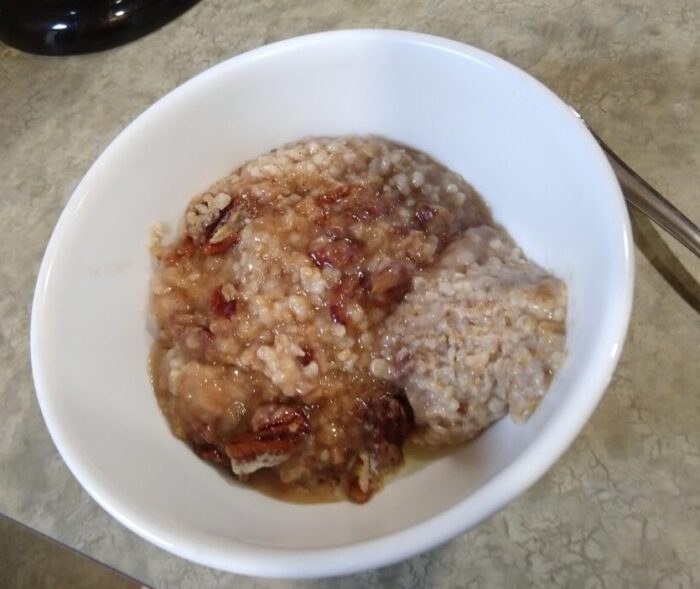
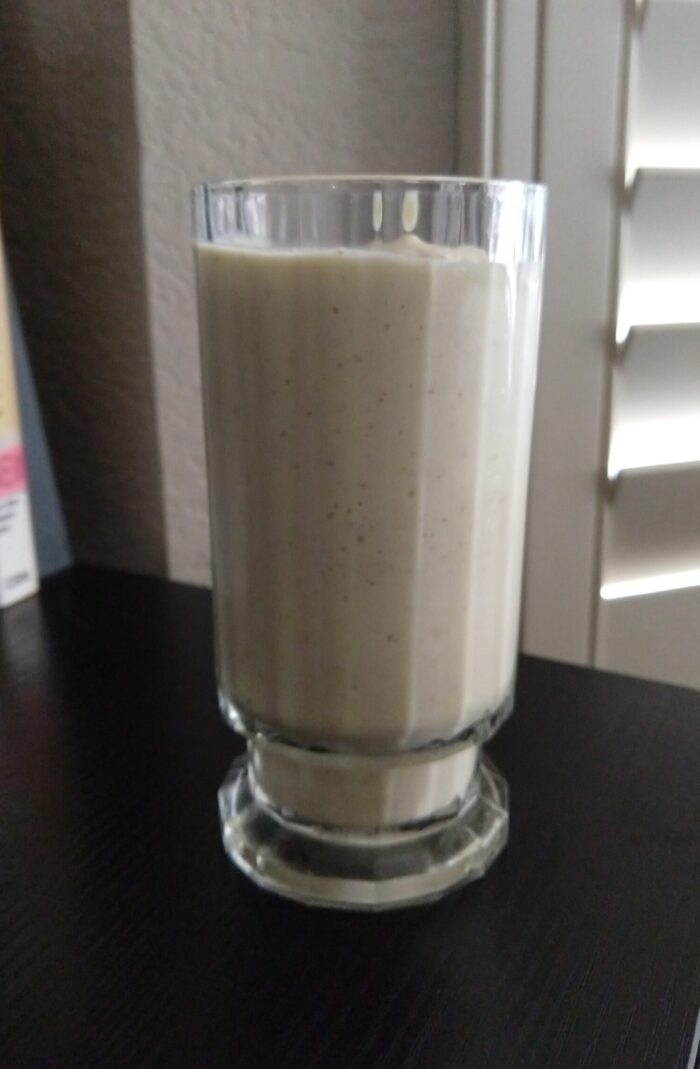
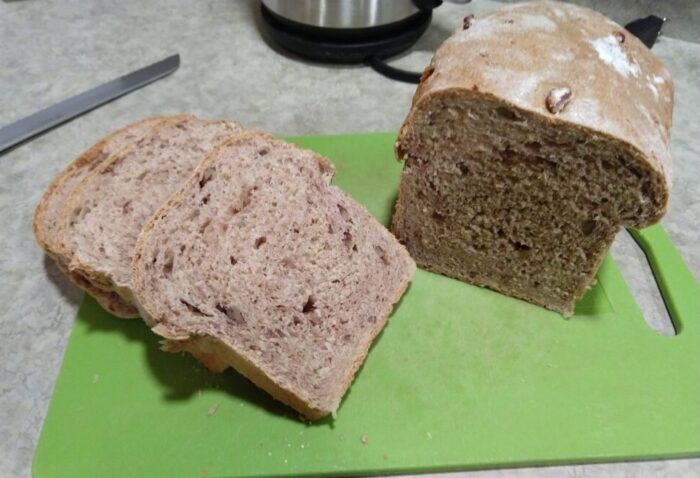



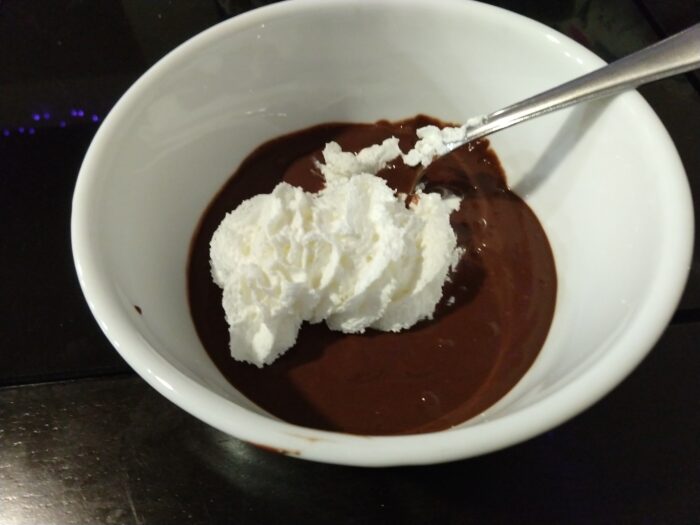


Cat Therapy
Finally, here are some cat photos for your nerves. I know I have previously mentioned Huey’s love of drinking shower water. Here she is with her wet little face after vigorously shoving her face into my shower.
